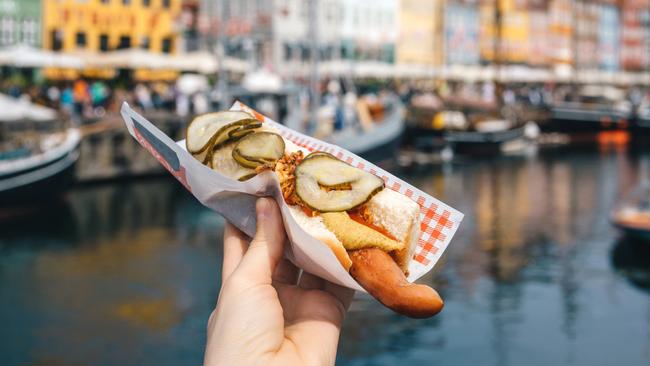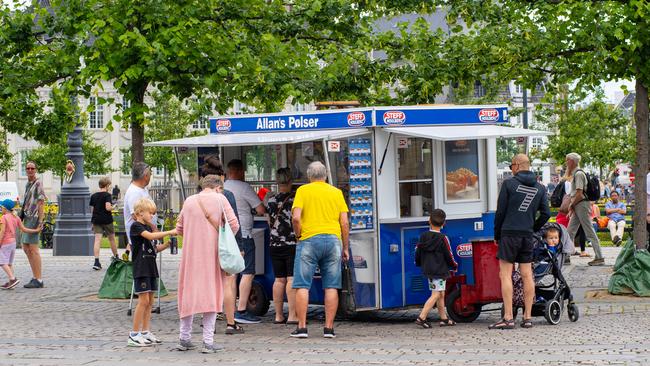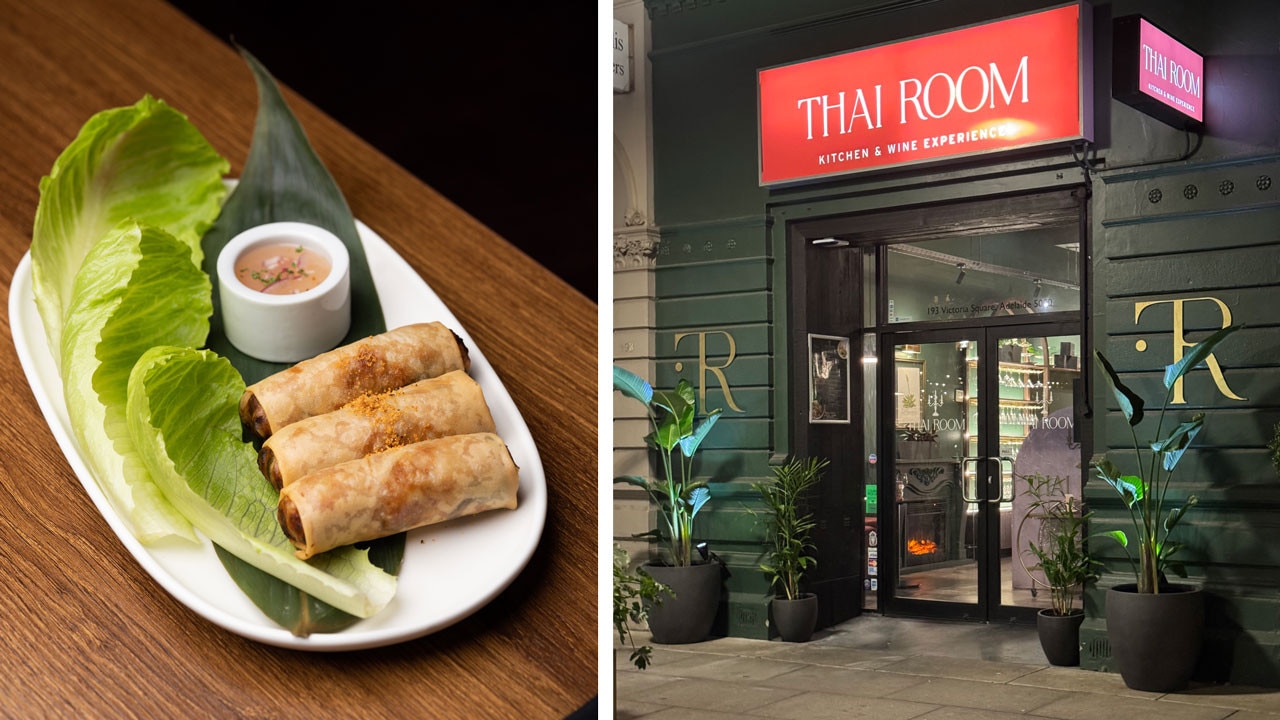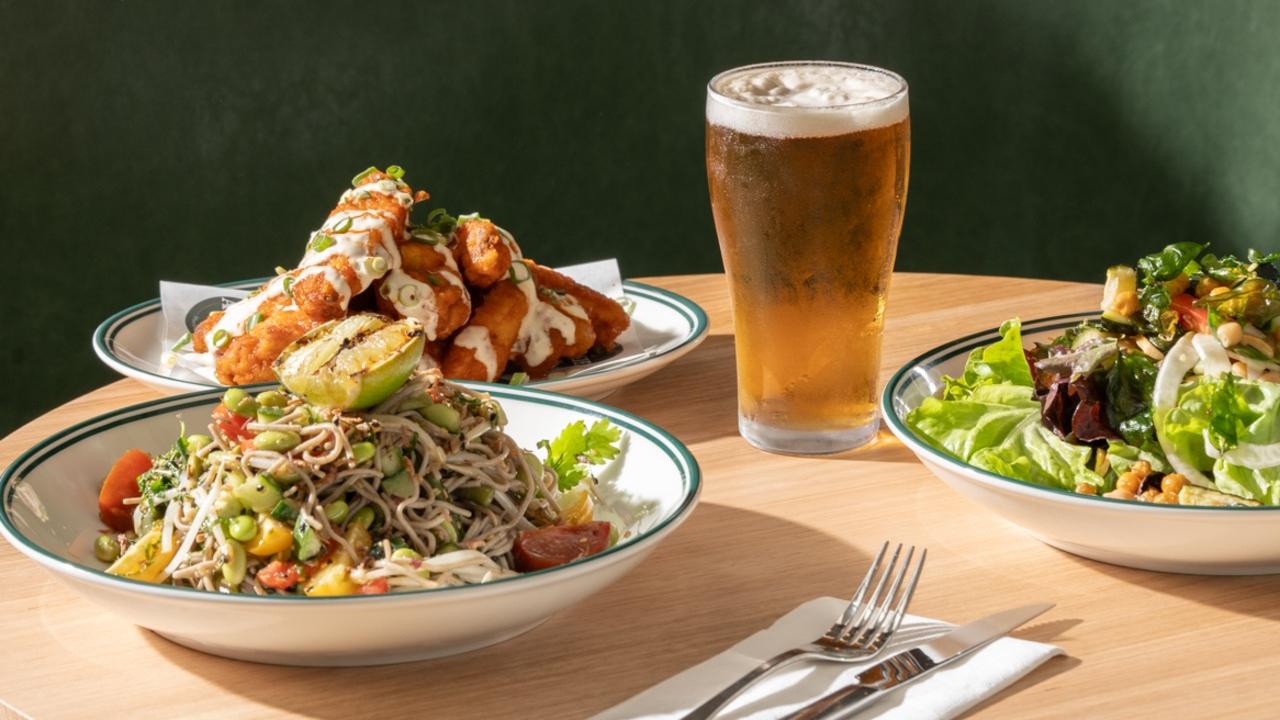Matt Preston has eaten hot dogs around the world, Copenhagen is No.1
Despite the American rep, the world's best hot dogs come from Denmark.

Food & Wine
Don't miss out on the headlines from Food & Wine. Followed categories will be added to My News.
For a city of a mere 1.4 million people Copenhagen punches way above its weight when it comes to all things culinary. It’s home to not one, but two former world number-one restaurants (Noma and Geranium), and gems like Alchemist where Rasmus Munk serves his theatrical food, currently ranked number eight in the world. For easier-to-book modern dining, other notable choices include Kadeau ( just outside the World’s 50 Best) and Aussie Beau Clugston’s Iluka.
There’s also a suite of modern bakeries that owe a debt to top fine-diners. Hart Bageri, for instance, is a collab between Noma chef-patron René Redzepi and Richard Hart, formerly of San Francisco’s famed Tartine Bakery.

But in this Brave New World, the biggest surprise to me about the Danish capital is that it’s home to the world’s best hot dogs. They are all as memorably delicious as much of what I’ve eaten here in the home of Queen Mary of Tasmania. And they’re not some fancy take on a hot dog that’s all edible flowers, herbed crème fraîche and artisan-crafted, rare-breed pork “dog”. They’re just $10, eaten standing by the van that made them, and might even feature a shamelessly commercial “dog”, all delivering that essential kinetic and aural thrill of the skin popping juicily when you bite into them.
I say this is a surprise because, while the dogs in the hot dog originated in Frankfurt and Vienna, the hot dog itself is as American as apple pie. Germanic migrants brought their sausages with them to New York, but they only took off when a smart street-cart entrepreneur at one of the massive expos Americans were obsessed with at the turn of the 19th century started selling his sausage in a roll. Apparently Bavarian Anton Feuchtwanger had been selling his snags with accompanying white gloves to stop customers getting their fingers messy or burnt, but he needed to find a cheaper way.
The long, skinny frankfurters and wieners earnt the nickname “dachshunds” and were sold in rolls as “varme hundes”. The translation, “hot dog”, stuck and their fame was assured when a bloke named Harry M Stevens, who sold programs at baseball games, started also selling hot dogs at New York Giants home games in 1901. When the Giants and borough-neighbours the Brooklyn Dodgers were relocated to California in 1957 the hot dog went with them. Today, no trip to watch the Dodgers play in LA is complete without trying a Dodger dog.

I tried one and eating it was a challenge – the long dog dangles out of the steamed roll and is slathered in ketchup, gherkin relish mustard and diced onions. It was good but no Danish pølse (as they’re called in Copenhagen).
I have a frame of reference, having tasted many of the famous hot dogs in the US. I’ve queued for an hour to get one from LA’s favourite dog pound, Pink’s. I’ve tried a Coney Island red dog from pioneer Nathan’s and earnt indigestion from my obsession by eating everything from a NYC dog with sauerkraut, brown mustard and onions to a chilli dog way too fast.
Copenhagen’s love affair with the hot dog began in 1921 when the government granted licences for pølsevogn, the street carts that are still wheeled into position around the city each morning. In a time before Thai and Chinese takeaway, the hot dog was Copenhagen’s fast food and still is the essential snack after a night at the clubs or out drinking Carlsberg. Tick both boxes – that’s when I first had mine, from the famed John’s cart outside the main station.

It’s a simple choice between a French-style pølse slipped into a snug hole pierced in the bun (usually with a creamy dressing squirt in the hole first, but ketchup isn’t frowned upon), a fancier frankfurt or the classic røde or red dog. I haven’t wavered since that first time going for the classic ristet or roasted hot dog whether I’m back at John’s or any of the 50 or so other carts around town.
Some say John’s isn’t what it was without the grumpy old bloke cramped in the van, and that trendier pølsevogn have come along like Den Økologiske Pølsemand with its organic menu and dogs served with everything from mashed roots to stewed kale. And now you’ll find dogs made of proteins other than just pork – think goat, beef or chicken – and flavoured with more than the usual whisper of allspice, cardamom, nutmeg or beech-smoke.
Now, I can understand why you might get jack of slinging dogs. I once spent a sweltering day making dogs in a tiny Danish hot dog stand about the size of one of Kenny’s festival toilets. I was stooped, assembling dogs with what I see as the classic garnish – and the thing that makes a Danish dog stand out – a smear of creamy rémoulade, topped with lightly pickled onion, golden crisp onion and a crunchy dill pickles. Yes, there’s mustard and ketchup if you want it. I say “yes” to the former and “no” to the latter.
Even if it’s a million miles from the plates of shaved musk ox and pretty, doll-house constructions of golden roe from Bornholm and wild mulberries served in those renowned fine-diners, I still reckon Copenhagen’s hot dogs are a dish well worth travelling for. And, even better, when you leave Copenhagen there’s a rather good commercial hot dog stand at the airport for your last bite of a true Danish favourite.





